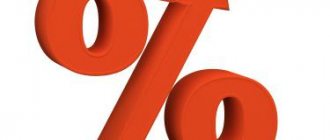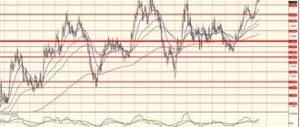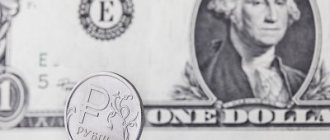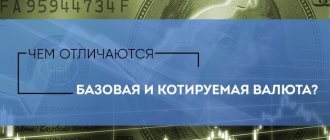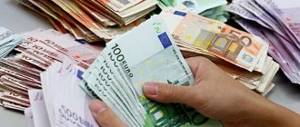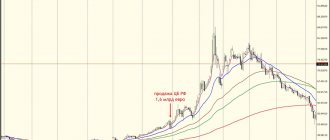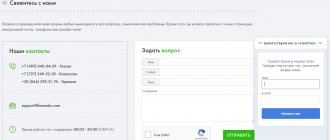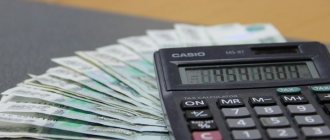How is the Central Bank dollar exchange rate set for today and tomorrow?
The peculiarity is that the provisions on the indicators for today were adopted yesterday. Institutions prefer to use up-to-date information when tracking quotes on the Moscow Currency Exchange.
The dollar exchange rate for today and tomorrow is updated only from Monday to Friday. On weekends, official values are kept at the mark of the last working day. New values are published only on Monday and take effect on Tuesday. A similar scheme applies on holidays.
The rate is formed during trading on the currency section. Once the data is received, the Central Bank generates official indicators for the other 33 currencies. Quotes depend on what prevails: supply or demand.
See also: Current euro exchange rate of the Central Bank of the Russian Federation
Dynamics of the dollar exchange rate of the Central Bank of the Russian Federation
We suggest studying the chart for the month: from it you can understand when the US currency sharply fell in price or rose. This allows you to determine the optimal time for selling and buying. The dynamics of the dollar exchange rate of the Central Bank of the Russian Federation for the month, day by day on the chart is constantly updated, more recent values appear.
- Representatives of various financial departments, businessmen and individuals will find the site useful because:
- information is updated daily, immediately after the publication of a new order of the Central Bank;
- dynamics are displayed for any period of time;
- It is possible to find out data for a certain date from the archive.
The Central Bank dollar exchange rate allows you to determine the time for a more profitable transfer of money from one currency to another. It is worth focusing on it in order to understand how the situation will change in relation to exotic types of currencies.
Definition
You don't know how exchange rates are determined? For many people, this tariff is an intuitive and familiar concept, especially considering that lately it has hardly left news reports. However, not everyone can explain what it is and how the price of foreign currencies is determined in Russia.
In general terms, everything is very simple. The exchange rate is the quotation (value) of the monetary unit of one country, expressed in the monetary unit of another country, securities, and precious metals.
The tariff shows the ratio of the currency of one country to the currency of another. In other words, in simple words, the exchange rate is the number of units of one currency that must be paid to receive a unit of another. It must be remembered that when talking about currency pairs and the rate of currencies, in the name of the pair the first currency is always the one whose rate is expressed, and the second is the one in which it is expressed.
For example, the analogy of the US dollar - Russian ruble pair is 60. This means that the dollar to ruble rate is 60. That is, for 1 dollar you will have to pay 60 rubles. The interethnic foreign exchange tariff is established for the currencies of all powers, as this is necessary for the execution of global settlements not only at the level of organizations and individual citizens, but also at the government level. However, not all currencies have sufficient supply and demand to be exchanged directly.
Fixed
Are you still asking who sets exchange rates and how? Let's consider a fixed tariff. This is the rate of the state currency, officially supported and fixed by the Central Bank. This type of price does not depend on the results of trading on the exchange, but in its pure form it is extremely rare.
In this case, the ratio of the national currency to that of a foreign power is strictly fixed, and the Central Bank maintains the desired parity of money. However, you need to understand that such activities can be very costly if the country’s economy is experiencing crisis phenomena. After all, in order to maintain the currency exchange rate, which is falling in the market, the Central Bank has to make transactions with a large loss. This is necessary to ensure tariff stability.
In especially severe cases, such a policy can lead to the emergence of a black market for currency, with rates differing significantly.
Policy
Political decisions have a great influence on the course. Thus, at the end of 2013 – beginning of 2014, the interest of international investors in the assets of countries with emerging markets, including Russian assets, noticeably decreased. The reasons for this were the decisions of the US Federal Reserve to reduce the volume of asset purchases under the quantitative easing program (which leads to slower growth in the supply of foreign currency than previously), as well as signs of slowing economic growth in emerging markets (which leads to decrease in the profitability of financial investments in these countries).
These reasons turned out to be stronger than expensive oil. The situation in Ukraine in 2014 also added fuel to the fire. Due to fears of a conflict, many investors simply began to withdraw their capital from Russia, which led to a significant capital outflow.
Questions and answers
According to Article 34.1 of the Federal Law “On the Central Bank of the Russian Federation (Bank of Russia)”, the main goal of the monetary policy of the Bank of Russia is to protect and ensure the stability of the ruble by maintaining price stability. Thus, ensuring the stability of the national currency does not mean maintaining its exchange rate relative to other currencies at a constant level, but is achieved by maintaining its purchasing power by ensuring low inflation. When low inflation is achieved, the volume of goods and services that can be purchased for a fixed amount in rubles does not change significantly over a long period, which maintains the confidence of business entities in the national currency and ultimately creates favorable conditions for the growth of the Russian economy. When conducting monetary policy, the Bank of Russia takes into account the impact of exchange rate dynamics on the growth rate of consumer prices along with other factors.
In accordance with the “Main Directions of the Unified State Monetary Policy for 2021 and the Period of 2021 and 2021,” the goal of monetary policy is to maintain annual inflation near 4% at all times. Small fluctuations in inflation around the target are allowed. If inflation deviates from the target or there are factors that may cause such a deviation, the Bank of Russia takes measures to help return inflation to the target.
At the same time, the exchange rate policy of the Bank of Russia since November 10, 2014 has been carried out within the framework of a floating exchange rate regime, which assumes that the ruble exchange rate is not fixed and no targets are set for the level of the exchange rate or the rate of its change. The dynamics of the ruble exchange rate is determined by market factors, that is, it is formed under the influence of changes in the supply and demand of foreign currency in the foreign exchange market. Under normal conditions, the Bank of Russia does not make foreign exchange interventions aimed at influencing the dynamics of the ruble exchange rate. This enables the Bank of Russia to more effectively influence inflation.
At the same time, within the framework of a floating exchange rate regime, it is not expected that foreign exchange interventions will be completely abandoned; they can be carried out in the event of threats to financial stability. For example, such a situation arose in December 2014, when the excessive weakening of the ruble led to its significant deviation from fundamentally justified values, that is, those levels that are determined by the action of macroeconomic factors, primarily affecting the balance of payments: prices for exported goods, differential interest rates, economic activity and other parameters. During this period, the Bank of Russia carried out sales of foreign currency on certain days. In conditions where exchange rate fluctuations pose a threat to financial stability, the Bank of Russia can also use currency refinancing mechanisms in order to stabilize the situation.
In addition, the Bank of Russia may conduct operations in the foreign exchange market to replenish or use international reserves in connection with the implementation of the budget rule by the Russian Ministry of Finance. Under this rule, the volume of additional oil and gas revenues from the federal budget allocated for the purchase of foreign currency for subsequent transfer to the National Welfare Fund (NWF), or the volume of foreign currency from the NWF allocated for sale for subsequent transfer to the budget, is calculated by the Russian Ministry of Finance. The Bank of Russia conducts operations in such a way as not to have a significant impact on the dynamics of the exchange rate. If threats to the stability of the financial market arise, the Bank of Russia may temporarily suspend these operations. This practice does not contradict the concept of a floating exchange rate regime.
Detailed information about the history of the exchange rate policy of the Bank of Russia is presented in the “Monetary Policy” section of the official website of the Bank of Russia.
What is the official exchange rate?
This is the officially established exchange rate of one currency to another. So in Russia, the Central Bank sets the ruble exchange rate to other currencies on a daily basis. The list of acceptable currencies and their exchange rates are published on the Central Bank website. The dollar exchange rate is set based on quotes at trading on the MICEX. The euro exchange rate is established in the same way.
Formal courses have an important purpose. Based on them, tax and accounting records are maintained, as well as customs and other settlements/payments, including settlements with foreign partners.
Currency exchange is related to its convertibility. The degree of conversion depends on government regulation. If a country's currency is freely exchangeable, it is called freely convertible. It happens that some restrictions are imposed: complete or partial.
Almost all countries participate in international trade and conduct foreign economic transactions, so supply and demand are not in equilibrium. If a country's balance of payments is positive, then foreign exchange rates fall, and the national currency rate strengthens due to demand for it. If the country's balance is negative, then foreign exchange rates rise significantly, because Importers, trying to pay off external debts, begin to buy foreign currency. Also, crises and negative financial problems affect rates. Under these conditions, the Central Bank is forced to reduce the official exchange rate of the domestic currency in order to somehow support it and prevent collapse. This happened in 2014-16, and the foreign exchange rate increased by 2-2.5 times.
Official exchange rates are explained by “purchasing power parity,” which is expressed by a simple thesis: the price of a product in country A must correspond to the price in country B. Since the cost is expressed in different currencies, their ratio determines the exchange rate.
Exchange tariff
We have already found out how the exchange rate in banks is formed. Now we will find out how the exchange tariff is developed. The most profitable and fair exchange rate is considered to be one created under conditions of free trading of funds on exchanges. In this case, the price is determined by the market, and no one's income is included in it.
That is why it is most profitable to buy currency on the exchange, if possible. Many traders know where currency quotes come from - it is exchange trading that provides the basis for the formation of all other tariffs. And yet there are exceptions.
If you want to find out in which case the rate of a particular currency is created without taking into account the influence of trading in this currency on the exchange, as well as how the price of funds is determined in this situation, you need to study the basic types of official exchange rates.
For an ordinary consumer, the difference in exchange rates between the exchange and banks will be completely invisible. Even between the tariff of the Central Bank and commercial banks for amounts up to 2-5 thousand. e. will not be visible. But if you are a trader, then the exchange rate will not only be profitable, but will also allow you to use leverage for trading on the exchange.
Tariff of trading banks
Few people know who sets the exchange rate. Let's consider the tariff of merchant banks, at which many citizens sell and purchase the necessary units in their branches. Usually this currency value is the least profitable. Moreover, merchant banks almost always establish a very large difference between the purchase price and the selling price of a currency, which makes purchasing it in order to make money on changes in the exchange rate almost pointless.
The tariffs of merchant banks are established differently from the way the Central Bank rate is introduced. Typically, credit institutions determine the prices at which they buy and sell currency themselves. Consequently, such prices also include the bank’s income, which is also a loss for the citizen buying or selling the currency. There is also a foreign exchange interbank tariff, according to which the purchase and sale of money is carried out between the banks themselves. Ordinary citizens never encounter this course. However, on its basis, the exchange value of funds is formed, at which banks offer their clients to carry out transactions with currency.
Typically, the price at which the bank sells funds is always higher than the interbank rate, and the price at which it purchases is lower.
Floating
Everyone should know what the dollar exchange rate and the euro exchange rate are. Also find out how they are installed. Let's look at floating unit rates. In countries with such tariffs, the price of the people's currency is set by the market. One example of such powers today is Russia, whose monetary exchange rate is introduced based on the results of exchange trading.
To identify the official price for the coming working day, first, currency quotes are generated on the stock exchange for the calculated time interval. Afterwards, the Central Bank calculates the average value for this period, which is considered the official exchange rate for the next day.
This kind of tariff is unstable, which, on the one hand, allows traders to make money on it, and on the other hand, allows the Central Bank not to spend money on fixing the exchange rate. Also, the floating value increases the dependence of the population's actual income on the investment prestige of the country's economy - after all, the higher the exchange rate, the more foreign currency you can buy for the same amount.
Some average variation between a floating and a fixed tariff is the setting of government localizations of the rate movement interval. This method is called a currency corridor - the exchange rate fluctuates freely within the boundaries of specific indicators, but the Central Bank does not allow them to be crossed. If it approaches the limit level, it arranges currency interventions and keeps the price within the corridor.
Cross course. What are we talking about?
Many people ask: “How are exchange rates determined?” And this question is really very important. When the desired currency needs to be purchased directly, its cross rate is revealed - the correlation of two currencies through a third. Very often, the intermediary’s price is the euro or US dollar, since these currencies are freely exchanged for almost any other.
The cross rate is established on the basis of the parity of two currencies to a third, that is, you need to perform two operations when converting currencies from one to another. It is cross rates that the Central Bank of the Russian Federation uses when determining the prices of many foreign currencies, with the exception of the euro and dollar.
Why is the ruble weakening when oil is expensive?
Many Russians associate the 2014 crisis and the fall in the value of the national currency with a sharp decline in the price of oil. Now everyone is seeing the following picture: oil is relatively expensive, but the ruble continues to go down. It is worth recalling here that the exchange rate is determined by the relationship between the demand for foreign currency and its supply on the market. Literally anything can affect the exchange rate: these are sanctions, the dynamics of markets in developing countries, and new duties. The price of oil is only one of the factors, but not the most important.
Who sets the official exchange rate?
The establishment is carried out by the Central Bank, in accordance with Federal Law No. 86 “On the Central Bank”. At the same time, the Central Bank does not assume the obligation to buy or sell currency at its official rate. It is worth noting that an ordinary person cannot go to the Central Bank and buy currency at the officially established rate. In fact, transactions are carried out in private banks at the rate of this bank. It is often overestimated, since this is how the bank earns its profit.
